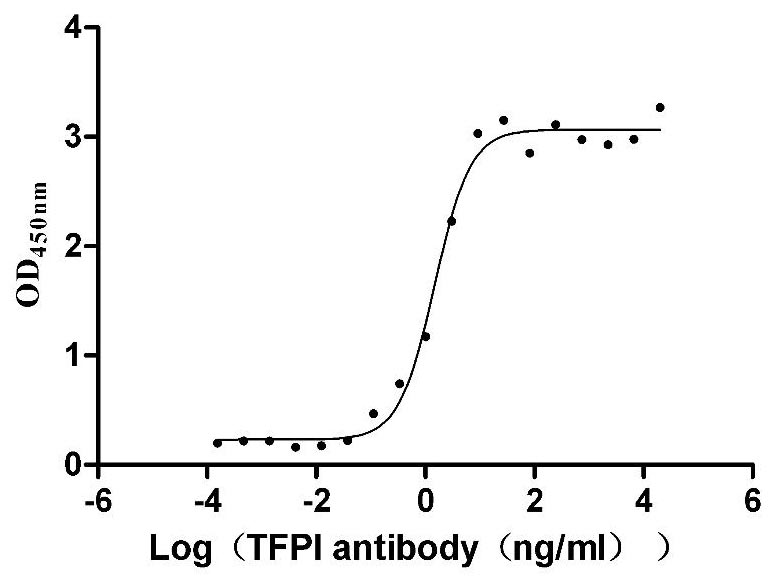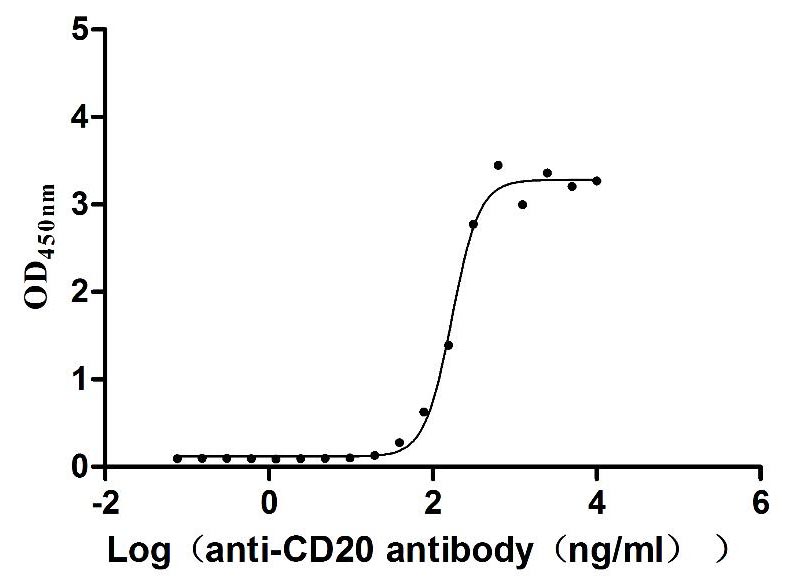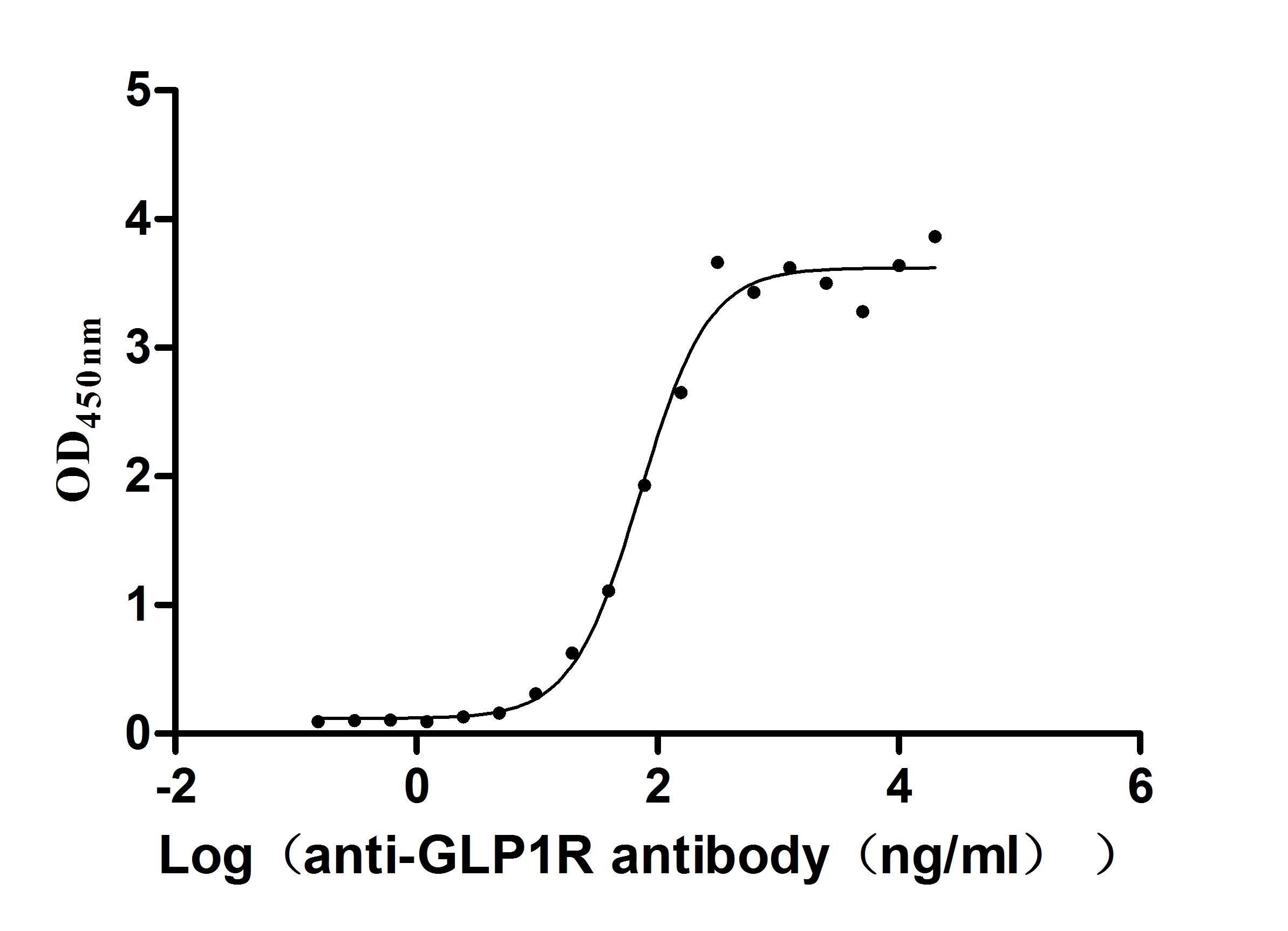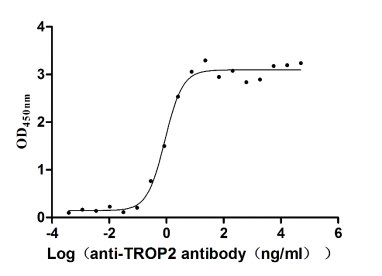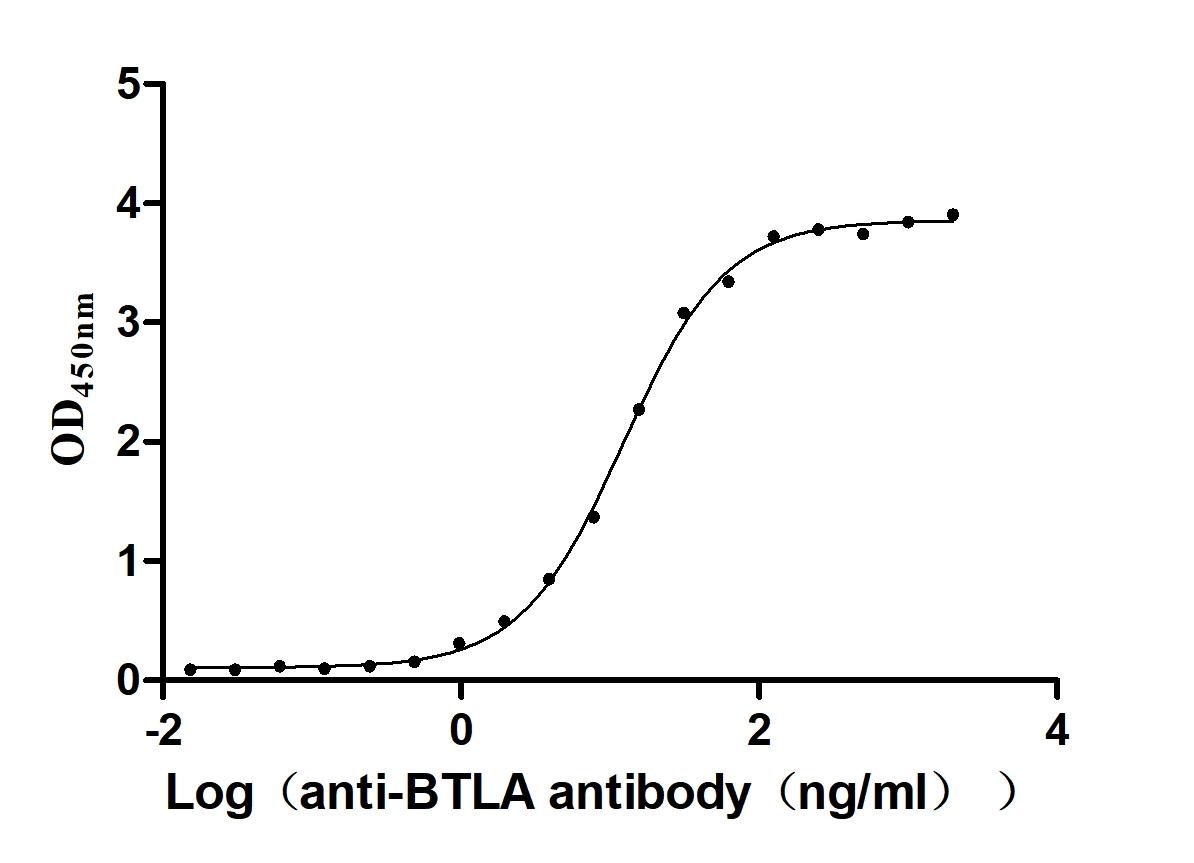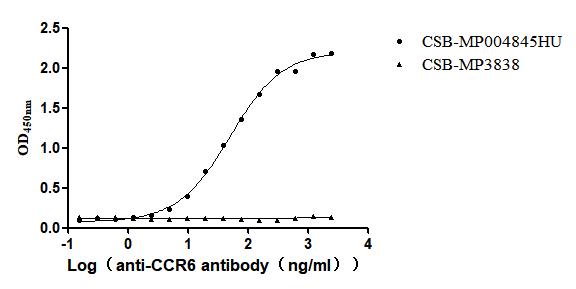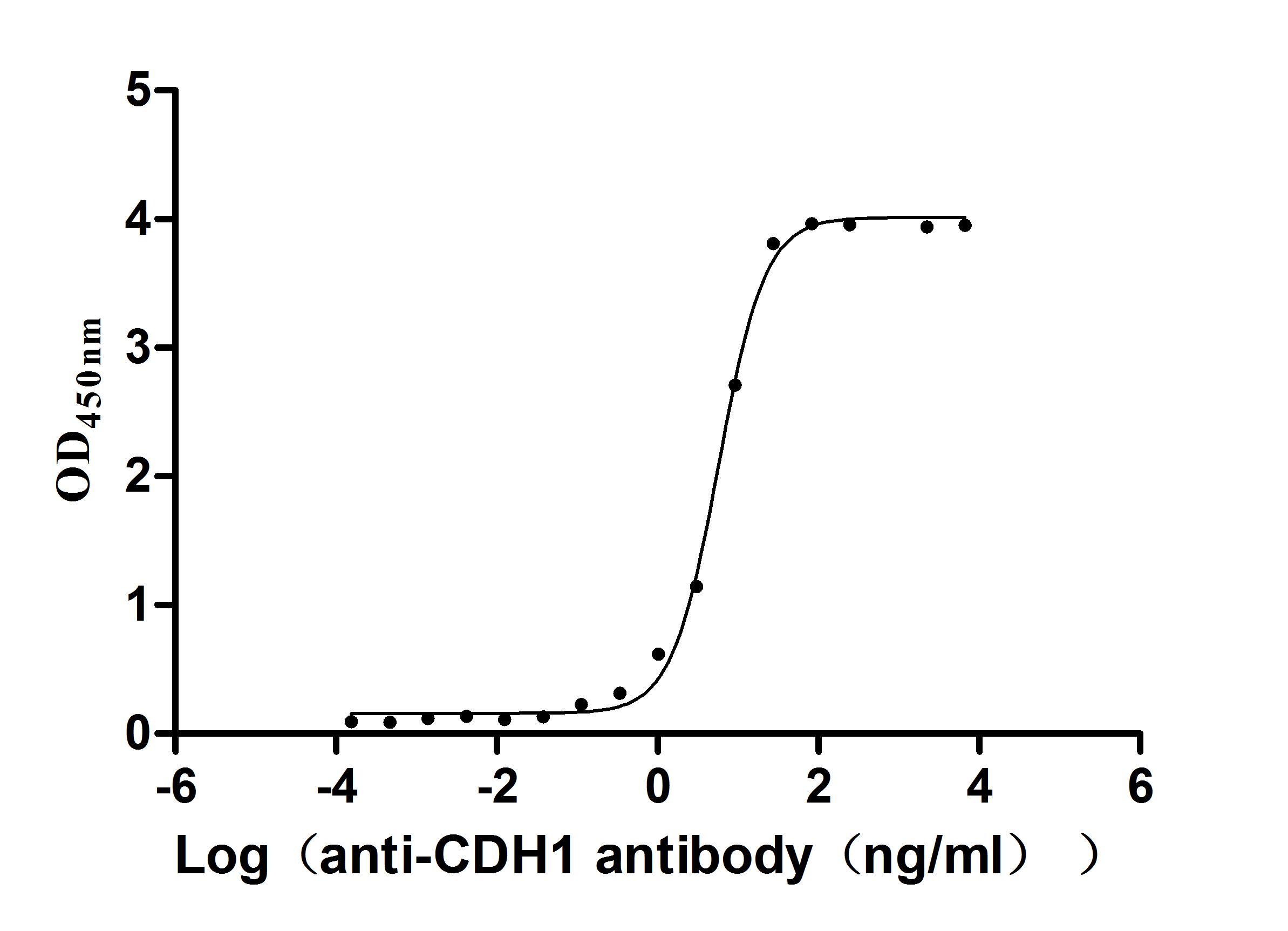Recombinant Rat Solute carrier family 12 member 5 (Slc12a5), partial
-
中文名称:大鼠Slc12a5重组蛋白
-
货号:CSB-YP737212RA
-
规格:
-
来源:Yeast
-
其他:
-
中文名称:大鼠Slc12a5重组蛋白
-
货号:CSB-EP737212RA
-
规格:
-
来源:E.coli
-
其他:
-
中文名称:大鼠Slc12a5重组蛋白
-
货号:CSB-EP737212RA-B
-
规格:
-
来源:E.coli
-
共轭:Avi-tag Biotinylated
E. coli biotin ligase (BirA) is highly specific in covalently attaching biotin to the 15 amino acid AviTag peptide. This recombinant protein was biotinylated in vivo by AviTag-BirA technology, which method is BriA catalyzes amide linkage between the biotin and the specific lysine of the AviTag.
-
其他:
-
中文名称:大鼠Slc12a5重组蛋白
-
货号:CSB-BP737212RA
-
规格:
-
来源:Baculovirus
-
其他:
-
中文名称:大鼠Slc12a5重组蛋白
-
货号:CSB-MP737212RA
-
规格:
-
来源:Mammalian cell
-
其他:
产品详情
-
纯度:>85% (SDS-PAGE)
-
基因名:Slc12a5
-
Uniprot No.:
-
别名:Slc12a5; Kcc2; Solute carrier family 12 member 5; Electroneutral potassium-chloride cotransporter 2; Furosemide-sensitive K-Cl cotransporter; K-Cl cotransporter 2; rKCC2; Neuronal K-Cl cotransporter
-
种属:Rattus norvegicus (Rat)
-
蛋白长度:Partial
-
蛋白标签:Tag type will be determined during the manufacturing process.
The tag type will be determined during production process. If you have specified tag type, please tell us and we will develop the specified tag preferentially. -
产品提供形式:Lyophilized powder
Note: We will preferentially ship the format that we have in stock, however, if you have any special requirement for the format, please remark your requirement when placing the order, we will prepare according to your demand. -
复溶:We recommend that this vial be briefly centrifuged prior to opening to bring the contents to the bottom. Please reconstitute protein in deionized sterile water to a concentration of 0.1-1.0 mg/mL.We recommend to add 5-50% of glycerol (final concentration) and aliquot for long-term storage at -20℃/-80℃. Our default final concentration of glycerol is 50%. Customers could use it as reference.
-
储存条件:Store at -20°C/-80°C upon receipt, aliquoting is necessary for mutiple use. Avoid repeated freeze-thaw cycles.
-
保质期:The shelf life is related to many factors, storage state, buffer ingredients, storage temperature and the stability of the protein itself.
Generally, the shelf life of liquid form is 6 months at -20°C/-80°C. The shelf life of lyophilized form is 12 months at -20°C/-80°C. -
货期:Delivery time may differ from different purchasing way or location, please kindly consult your local distributors for specific delivery time.Note: All of our proteins are default shipped with normal blue ice packs, if you request to ship with dry ice, please communicate with us in advance and extra fees will be charged.
-
注意事项:Repeated freezing and thawing is not recommended. Store working aliquots at 4°C for up to one week.
-
Datasheet :Please contact us to get it.
靶点详情
-
功能:Mediates electroneutral potassium-chloride cotransport in mature neurons and is required for neuronal Cl(-) homeostasis. As major extruder of intracellular chloride, it establishes the low neuronal Cl(-) levels required for chloride influx after binding of GABA-A and glycine to their receptors, with subsequent hyperpolarization and neuronal inhibition. Involved in the regulation of dendritic spine formation and maturation.
-
基因功能参考文献:
- Chloride co-transporters, NKCC1 (Na+-K+-Cl- co-transporter-1) and KCC2 (K+-Cl- co-transporter-2) control the intracellular concentration of chloride ions and thus the functionality of GABA inhibitions. PMID: 27778437
- These findings suggest that PRF might be an alternative therapy for inflammatory pain. One of the underlying mechanisms is through modification of KCC2, which is an important determinant for the efficacy of inhibitory neurotransmission in the spinal cord, and its expression levels are regulated by histone acetylation epigenetically following inflammation. PMID: 27688312
- demonstrate that KCC2 overexpression in a compromised developing brain increases febrile seizure susceptibility and contribute to dendritic spine alterations PMID: 26875662
- Findings suggest that aberrant regulation of the plasma membrane levels of KCC2 might contribute to the impartment of GABAergic neurotransmission and that KCC2 dysfunction might be relevant for the initial appearance of spontaneous seizures. PMID: 27345384
- findings suggested that melatonin restores KCC2 expression, inhibits neuronal apoptosis and attenuates secondary brain injury after TBI, partially through activation of BDNF/ERK pathway. PMID: 27159133
- solute carrier family 12 member 5 (KCC2) is increased in SHR hippocampus with early life stress PMID: 26464063
- This study demonstrate that KCC2 plays a critical role in the regulation of spine actin cytoskeleton and gates long-term plasticity at excitatory synapses in cortical neurons. PMID: 26631461
- Results demonstrate that KCC2 transport can vary considerably in magnitude depending on the combination of alanine mutations present on the protein PMID: 25843644
- Results demonstrate that in vitro ictogenesis is abolished or facilitated by inhibiting or enhancing KCC2 activity, respectively PMID: 25926348
- results identify a threonine- and tyrosine-phosphorylation-resistant KCC2 variant with increased chloride transport activity, but also identify the KCC2 N-terminal domain as the relevant minimal KCC2 protein domain that is sufficient for neuroprotection. PMID: 26043076
- Suggest that KCC2 downregulation-mediated impairment of spinal cord Cl(-) homeostasis may play an important role in chronic stress-induced visceral hypersensitivity. PMID: 25792562
- High salt intake impairs baroreflex inhibition and downregulates KCC2 expression. PMID: 25619659
- The expression level did not change during the second postnatal week suggesting that, in contrast to hippocampus, adult pattern of KCC2 in the cortical cells is already established by the end of the first postnatal week. PMID: 23420348
- Exercise returns spinal excitability and levels of KCC2 toward normal levels in the lumbar spinal cord. PMID: 24990918
- KCC2 is part of a cascade that regulates activation of the descending pain facilitation. PMID: 23847084
- Collectively, these results demonstrate a role for KCC2 in excitatory synaptogenesis in vivo through a mechanism that is independent of its ion transport function. PMID: 22345354
- BPA can disrupt Kcc2 gene expression through epigenetic mechanisms PMID: 23440186
- N-methyl-D-aspartate receptor- and calpain-mediated proteolytic cleavage of K+-Cl- cotransporter-2 impairs spinal chloride homeostasis in neuropathic pain PMID: 22854961
- KCC2 immunoreactivity in multiple brain stem respiratory nuclei showed a developmental increase during the first 21 days of life PMID: 22441038
- These results suggest that SNARE proteins are necessary for the increased activity of KCC2 after Zn(2+) stimulation of mZnR/GPR39. PMID: 22441041
- Taurine inhibits K+-Cl- cotransporter KCC2 to regulate embryonic Cl- homeostasis via with-no-lysine (WNK) protein kinase signaling pathway. PMID: 22544747
- these results identify L(675) as a critical residue for KCC2 transport activity. PMID: 22414695
- These data suggest an important role of KCC2-dependent potassium/chloride homeostasis under neurototoxic conditions and reveal a novel role of endogenous KCC2 as a neuroprotective molecule. PMID: 21486764
- Data show that blocking dephosphorylation of Ser940 reduced the glutamate-induced downregulation of KCC2 and substantially improved the maintenance of hyperpolarizing GABAergic inhibition. PMID: 21532577
- the density of KCC2 in hippocampal principal cells increases along the axo-somato-dendritic axis with cell type-specific distribution profiles within the dendritic tree. PMID: 20880357
- These data raise the interesting possibility that a spontaneous depressive state in animals is associated with an amplified GABAergic transmission in the CNS resulting from an enhanced expression of KCC2. PMID: 20153734
- *Imbalanced function of KCC2 may contribute to the induction and maintenance of the chronic neuropathic pain following spinal cord injury. PMID: 20536931
- A substantial neuron-specific downregulation of KCC2 is reported after focal cerebral ischemia. PMID: 20044519
- downregulated after spinal cord injury in rats, particularly in motoneuron membranes PMID: 20190766
- the appearance of KCC2 expression mainly depends on the maturation of individual neurons in developing rat brain PMID: 12414094
- in axotomized neurons KCC2 downregulation impairs Cl(-) homeostasis and makes GABA act depolarizing, resulting in endogenous GABA inducing [Ca(2+)](i) oscillations via facilitation of NMDA-receptor activation. PMID: 12612004
- all of the CCCs examined (NKCC1, NKCC2, KCC1, KCC3, and KCC4) can promote NH4(+) translocation, presumably through binding of the ion at the K(+) site PMID: 12657561
- Local blockade or knock-down of the spinal KCC2 exporter in intact rats markedly reduced the nociceptive threshold, confirming that the reported disruption of anion homeostasis in lamina I neurons was sufficient to cause neuropathic pain PMID: 12931188
- KCC2 mRNA expression in the SNR as a function of sex and age was studied and KCC2 expression correlated with in vivo and in vitro effects of muscimol on calcium metabolism; sex differences in drug effects were noted PMID: 14552904
- an interaction between KCC2 and brain-type creatine kinase was detected in cultured cells and brain extracts, which might contribute to KCC2-mediated modulation of Cl(-) homeostasis PMID: 15094054
- At the ultrastructural level, abundant extrasynaptic KCC2 expression may play a role in the regulation of extrasynaptic GABA-A receptor-mediated inhibition. PMID: 15305865
- Altered KCC2 expression in arthritis may contribute to the control of spinal cord excitability. PMID: 15350966
- KCC2 mRNA was expressed in the motor trigeminal nucleus (Mo5), the principal trigeminal nucleus (Pr5), and the spinal trigeminal nucleus (Sp5). PMID: 15661361
- We conclude that the expression of KCC2 and the reduction of [Cl-]i play a critical role in the construction of GABAergic networks that extends beyond the excitatory to inhibitory shift of the actions of GABA. PMID: 15961425
- Thus, maturation of the GABA response may rely on an activity-dependent up-regulation of KCC-2. PMID: 16203042
- In the cellular micro-environment, brain-type creatine kinase activates the KCC2 function. PMID: 16336223
- Repetitive postsynaptic spiking reduces the inhibitory action of GABA through a Ca2+-dependent downregulation of KCC2 function. PMID: 16337915
- KCC2 mRNA levels were significantly lower in males relative to females at birth. KCC2 protein was significantly lower in males relative to females on PND5. PMID: 17355320
- Immature cortical plate neurons might produce "bridge" structure during formation of microgyrus;altered neuronal Cl(-)meostasis might be involved in neuronal migration disorder that ultimately results in cortical malformations. PMID: 17904674
- Increased GABA levels, along with decrease in KCC2 expression, may underlie the abnormal neuronal activity detected in the spinal cord of diabetic rats. PMID: 18457921
- reduction of the inhibitory action of GABA through downregulation of KCC2 function may be involved in the pathomechanisms of delayed neuronal death PMID: 18472345
- neuron-specific KCC2 transporters were present in most spiral ganglion neurons (SGNs) corresponding to the distribution of GABA(A)Rs. PMID: 18577424
- Protein Associated with Myc (PAM) was identified as a binding partner of KCC2. PMID: 18769030
- The rats with Thermal hyperalgesia exhibited a sustained loss of KCC2 protein during post-SCI days 21-42 PMID: 18799000
- Spinal cord injury induces KCC2 down-regulation and subsequent changes of the reversal potentials of GABA responses in the spinal dorsal horn below the injury site. PMID: 18845615
显示更多
收起更多
-
亚细胞定位:Membrane; Multi-pass membrane protein.
-
蛋白家族:SLC12A transporter family
-
组织特异性:Highly expressed in brain. Not detected in other tissues. Highly expressed in pyramidal neurons and in neurons throughout the cortex, hippocampus, the granular layer of the cerebellum and in groups of neurons throughout the brainstem. Barely detectable in
-
数据库链接:
Most popular with customers
-
Recombinant Human CD40 ligand (CD40LG), partial (Active)
Express system: Mammalian cell
Species: Homo sapiens (Human)
-
Recombinant Human Tissue factor pathway inhibitor (TFPI), partial (Active)
Express system: Mammalian cell
Species: Homo sapiens (Human)
-
Recombinant Dog B-lymphocyte antigen CD20 (MS4A1)-VLPs (Active)
Express system: Mammalian cell
Species: Canis lupus familiaris (Dog) (Canis familiaris)
-
Recombinant Human Glucagon-like peptide 1 receptor (GLP1R), partial (Active)
Express system: Mammalian cell
Species: Homo sapiens (Human)
-
Recombinant Human Tumor-associated calcium signal transducer 2 (TACSTD2), partial (Active)
Express system: Mammalian cell
Species: Homo sapiens (Human)
-
Recombinant Human B- and T-lymphocyte attenuator(BTLA), partial (Active)
Express system: Mammalian cell
Species: Homo sapiens (Human)
-
Recombinant Human C-C chemokine receptor type 6(CCR6)-VLPs (Active)
Express system: Mammalian cell
Species: Homo sapiens (Human)
-
Recombinant Human Cadherin-1(CDH1),partial (Active)
Express system: Mammalian cell
Species: Homo sapiens (Human)



